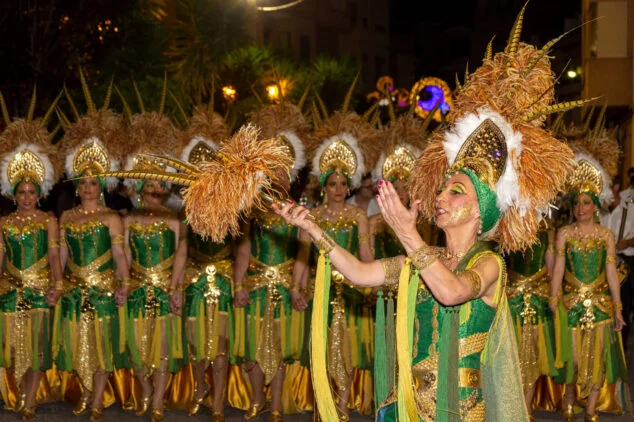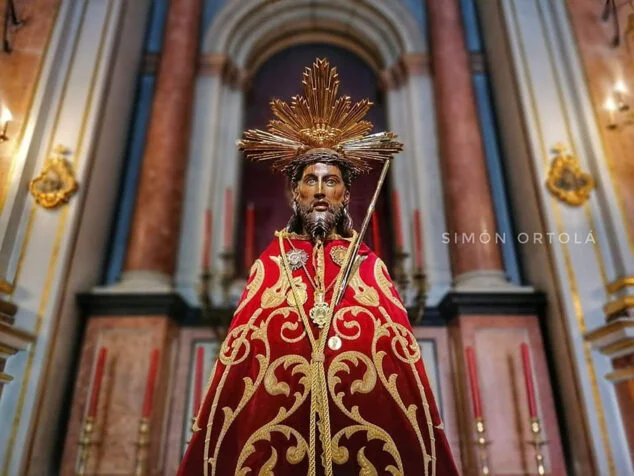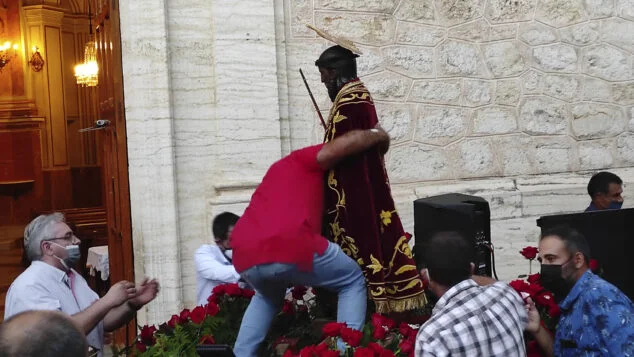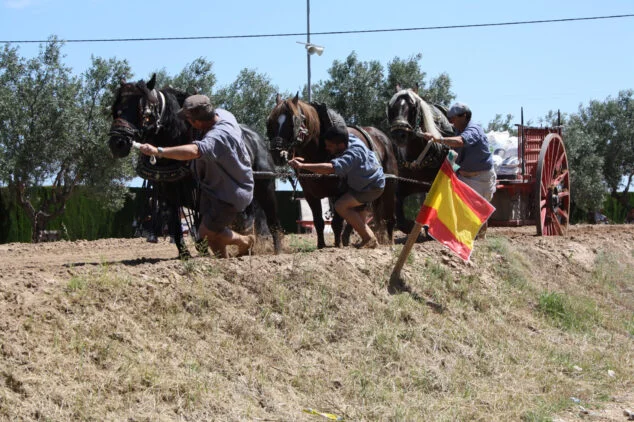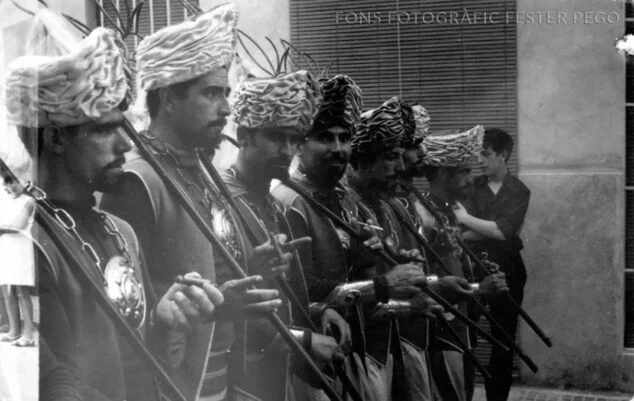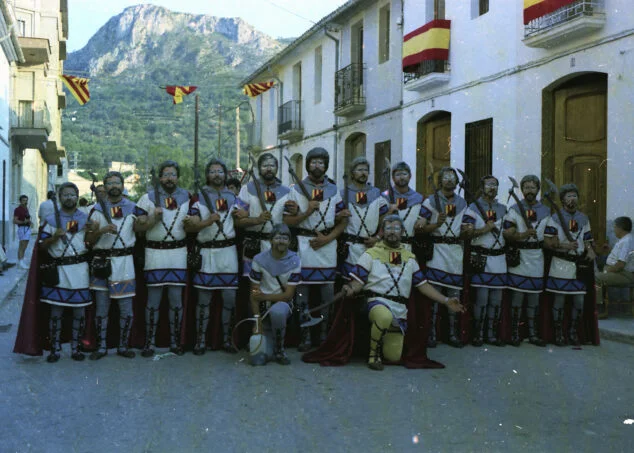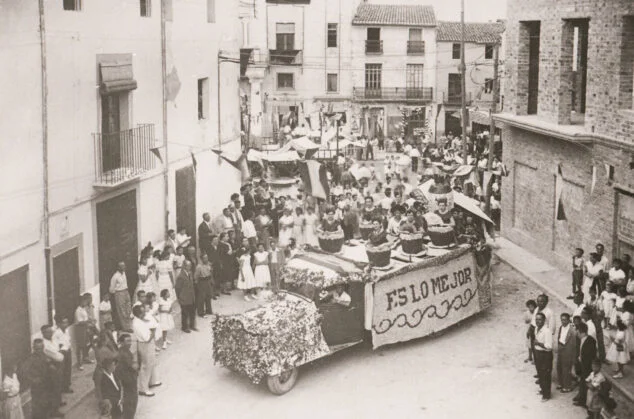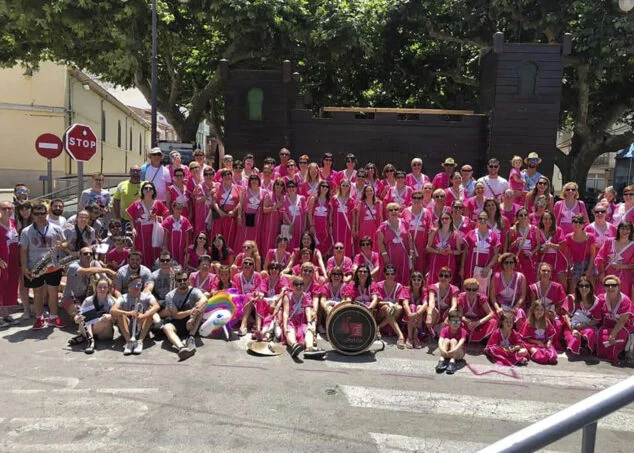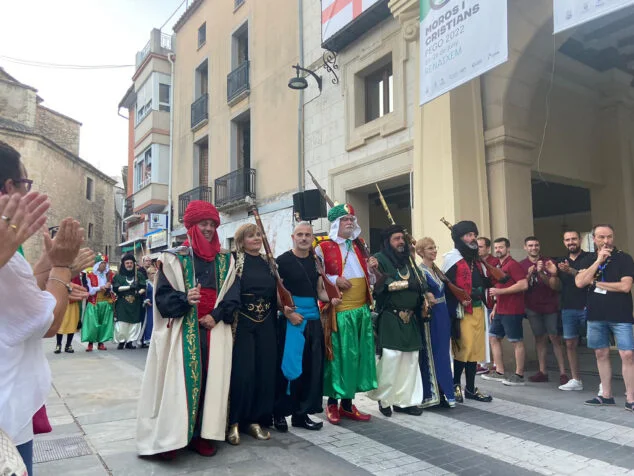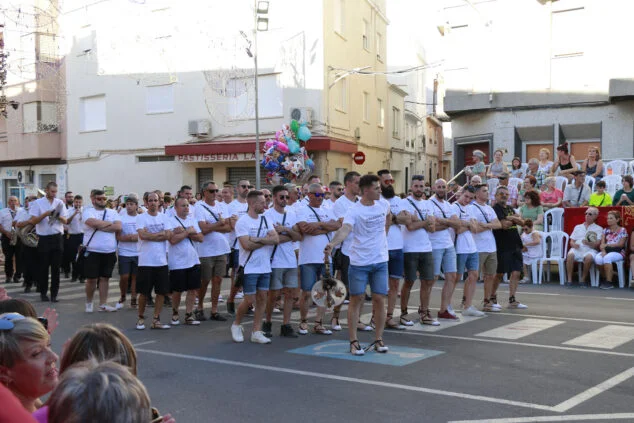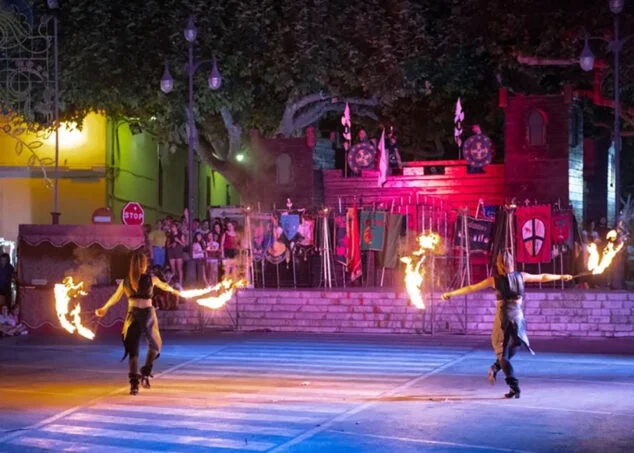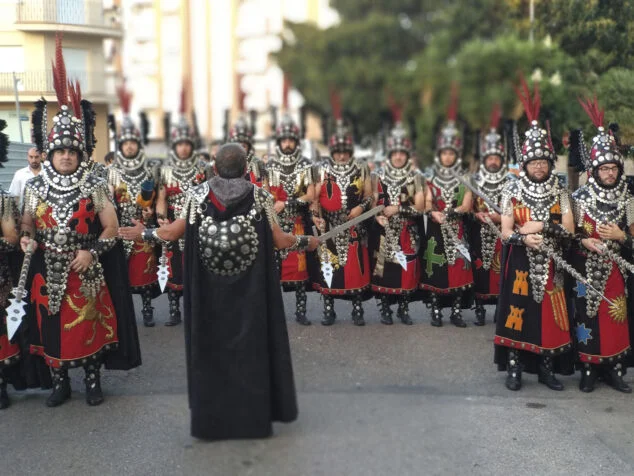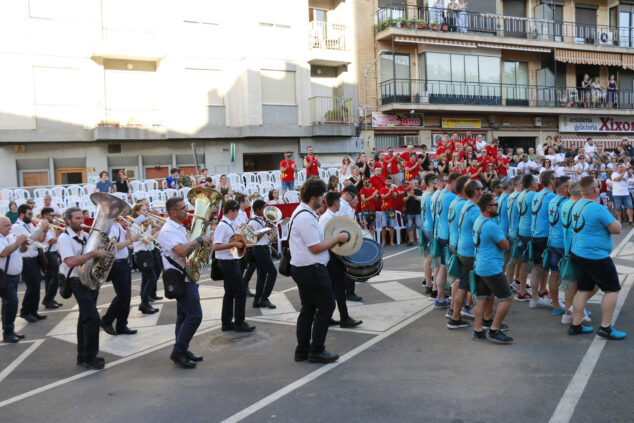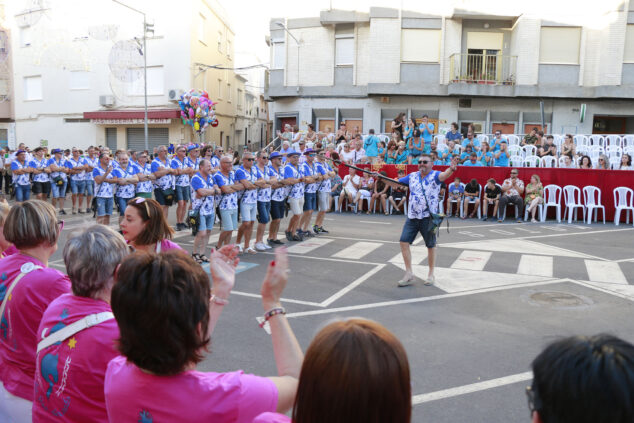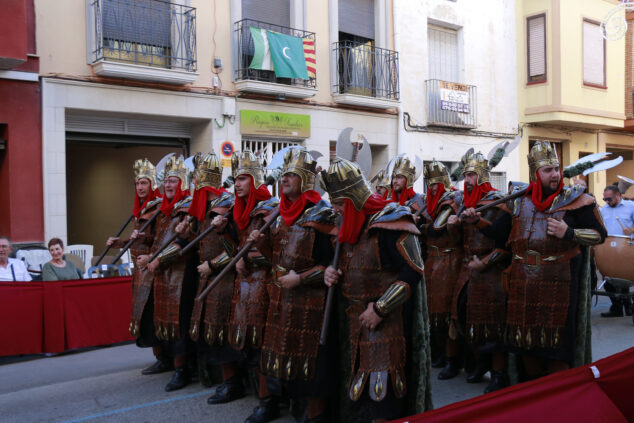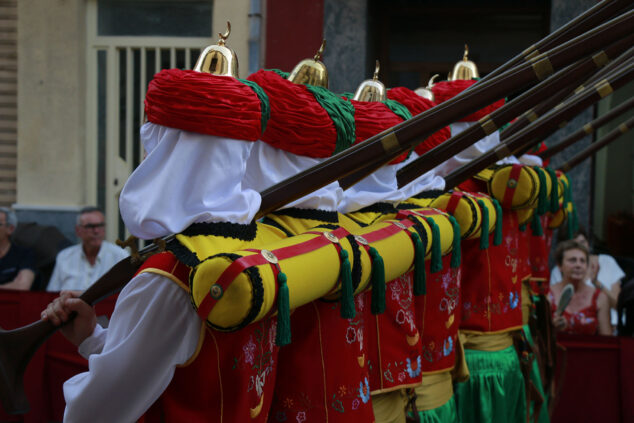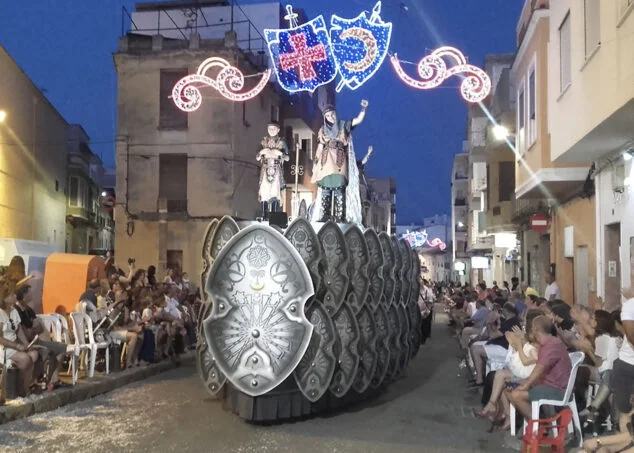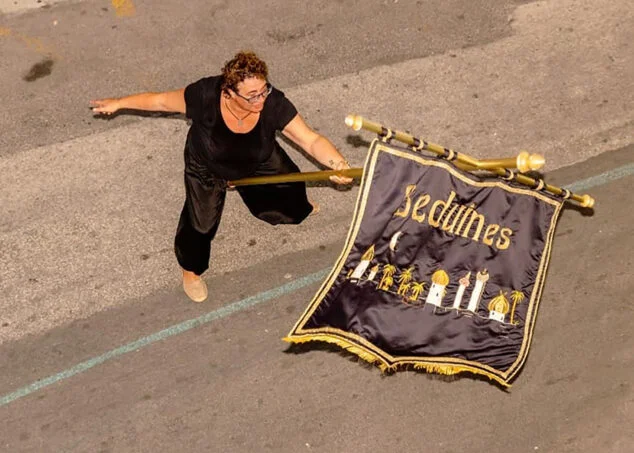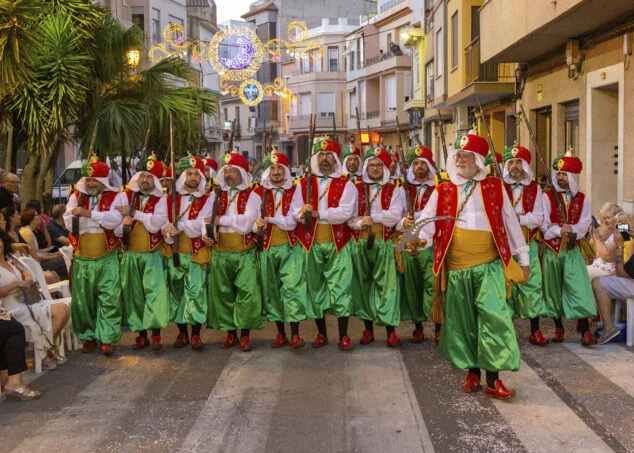All the patron saint and Moors and Christians festivities in Pego They take place at the end of June, but sometimes they cover some day in July. Popularly, the large festivals in the town are called Fira i Festes, however, they do not receive an official nomenclature.
Despite this, the various documents that the Municipal Archive of the town preserves confirm that already in the XNUMXth century the festivities had various types of fairs (fires). Both the Fira ramadera and the Fira i Porrat and also that of attractions made up the festivals of the town. For this reason, the Pegolinos popularly call their major festivities this way, since this is how it encompasses and encompasses everything.
- 1.
- 1.1.
- 1.2.1.
- 1.2.2.
- 1.2.3.
- 2.
- 2.1.
- 2.2.1.
- 2.2.2.
- 2.2.
- 2.3.1.
- 2.3.2.
- 2.3.
- 2.4.1.
- 2.4.2.
- 2.4.3.
- 2.4.4.
- 2.4.5.
- 2.4.
- 2.5.1.
- 2.5.2.
- 3.
- 4.
Festivities
The patron saint festivities of Pego are celebrated in honor of the Most Holy Ecce-Homo and are directly linked to those of the Most Precious Blood, just as in Dénia. There is evidence of the celebration of these religious celebrations in Pego since the XNUMXth century.
Dates and events
The major festivities of Pego take place from June 15 to 28 this year 2023. Among the patronal celebrations, the festivities in honor of Santíssim Ecce-Homo and Sant Cristòfol stand out.
El complete program of the Fiestas de Pego this year you can check it in the link.
Pattern day preparation
On June 28, the great day of the Holy Ecce-Homo is celebrated, although the festival in the municipality is prepared during the previous day. In this way, the previous day the image of the patron is exposed in the Chapel in his honor for a few hours.
Later, the image is transferred to the Church of the Assumption of Our Lady. At night, starting at 00:00, an aurora is celebrated in her honor through the streets of the municipality.
Holy Ecce Homo Day
El day of the Holy Ecce Homo the main acts prepared to celebrate in honor of the pegolí patron are carried out. On the one hand, the traditional distribution of the murta, which is done through a tour of the streets of the municipality. Another of the most emblematic events of the day is the procession, in which the saint is transferred back to his original Chapel.
Festivities in honor of Sant Cristòfol
Within the major festivals of Pego, there are also the Celebrations in honor of San Cristóbal. Since it is the patron saint of drivers, it is a tradition in the town to celebrate a parade of vehicles. The days before this festival the famous Valencian shooting and drag competitions are held.
Moors and Christians
The Moors and Christians festival in Pego is the strongest and largest day of the Fira i Festes. So much so, that the municipal authorities affirm that it is not entirely clear if this becomes more important than the patron saint festivities. That is why it is said that some celebrations are not understood without the others.
They are held on the last weekend of June, although the various events start a few days before. In this way, the Moors and Christians complement the long program of the big festivals, reaching two or three consecutive weekends.
History of the festival in Pego
The pegolina celebration is one of the oldest in the Marina Alta. It was born in 1967 at the hands of the Festival councilor at the time, Pepito Femenia Gilabert, who promoted the first entry of Moors and Christians, taking the example of Alcoi.
From the desire for the party the two emerged filaes Primitives, the Zimbas and the Marrakech. For the first years of celebration, specifically the first three, they resorted to inviting various groups from both Vila Joiosa and Alcoi to fill the municipality with their parades, apart from those of the filaes indigenous.
From 1970 it was when the City Council began to provide economic aid to encourage the young people of the town to create new groups. Also at this time three you enter consecutive Moors and Christians, from Friday to Sunday. In addition to ending the party definitively that week with a representation of the final battle between sides.
Background
According to the studies and investigations carried out by the Municipal Archive and the Coordinating Board of the festival in Pego, there is evidence that in 1880 a "luxurious cavalcade" was carried out in the municipality during the celebration of the festival.
From the subsequent descriptions of the parade that have been found, it follows that the costumes and themes that starred in the parade may be the root of the festival. Or, rather, the evident desire in Pego to carry out a Moors and Christians festival as they know it now.
The photographs evidence this statement by showing groups of pegolins dolled up in clothes inspired by Moorish stories, XNUMXth-century smugglers or medieval soldiers.
The figure of the woman at the party
The inclusion of women in the Moors and Christians has always been a topic of debate in most of the territories where it is celebrated. The antecedents mentioned above show that the comparsas and floats in Pego were a mixed celebration. However, from the first official Moors and Christians parade in 1967 until 1970, the first filaes of women.
In this way, the official documents of the City Council collect the names of those first female groups: Argelianas in 1971, Zaidas in 1972, the row Corsairs of 1973 or Las Ilsas and Campanilleras in 1974. The Coordinating Board also points out that from 1977 there is a great proliferation of women's groups in the locality.
For this reason, the Board highlights the importance of row oldest female in Pego, which persists to the present day. They are the Ha-Ben-Sahines moras, established in 1987. The statements of the Pegolina party coordinators also highlight the mixed normalization of the party with those filaes of men who gradually incorporated women among their members. As the row Almogàvers since 1984 or Coscolls since 1991.
Coordinating Board and organization
The Moors and Christians Festival of Pego is organized under the Coordinating Board. A group of people who are part of the party and, at the same time, are in charge of managing the work and tasks of the various groups. In addition, as a central nucleus, it is also in charge of informing, preparing proposals and communicating the results of the agreements that emerge from the meetings to improve the party at all times.
The Board, in turn, is structured into three different working groups. The party group is tasked with configuring and advising the various events based on the historic recovery of the party. It is also the one that ensures that the protocol, the recommendations of the entire group or the marked schedules, among others, are complied with.
For its part, the communication and participation group is in charge of promoting the festival in the various media. In addition, they also carry out the task of publicizing the various activities that are intended to increase local participation in the festival.
Finally, the infrastructure group studies and coordinates all the technical needs that the party requires, above all, in official acts. For example, lighting, access control, coordination with municipal authorities, among other needs.
Members
Like any group, the Coordinating Board has various figures with a task each. In this way, in Pego the Board is made up of the following positions:
- Presidency: Núria Gómez Bolufer.
- Vice-presidency: Àlex Vidal Miralles.
- Secretary: Dolores Ortolà Siscar.
- Treasury: Josep Moll Soro.
- Vocalía and accounting: Carla Santamaria Bordes.
- Party Coordination: Juanjo Bolufer Femenia.
- Communication and Participation Coordination: Andrea Pérez Camarena.
- Infrastructure Coordination: Carles Vicent Mengual Cots.
Board of Caps de Filà
So that the Coordinating Board has a full meaning and can communicate to the various filaes its proposals and decisions, there is the Board of Caps de Filà. It is made up of the Caps de Fila, that is, the delegates of each group.
In the meetings and encounters with the coordination, each Postcode speaks on behalf of his row full. So, each one has representation on the Board. Its task is to agree on the proposals of the Coordinating Board. The Caps de filà are represented on the Board by the following people:
- Filà Alaçdrach: Fernando Orihuel Siscar
- Filà Albardins: Bernat Ortolà i Ortolà
- Filà Algarades: Santi Briones Sendra
- Filà Al-Garrapets: Fernando Miralles Salvà
- Fila Al-Hagamba Muza: Alejandro Dominguis Sala
- Filà Almogàvers: Juan Aparisi Server
- Filà Beduïnes: Mª Jose Sendra Fullana
- Filà Conqueridors: Alba Cloquell Morató
- Filà Coscolls: Cristian Llidó Lloret
- Filà Feixucs: Llorenç Seguí Mengual
- Filà Ha-Ben-Sahines: Maria Baeza Lucas
- Filà Inquisidors: Pascu Vicens Rodríquez
- Filà Templàries: Maite Ferrandiz Perelló
Dates and events
In the Moors and Christians Festival of Pego there are a series of acts that cannot be missed in the celebration. They are events marked on the calendar that are repeated every year as part of the history and tradition of the festivities.
The festive publication
La Festive Publication It is the act that announces, from the balcony of the Town Hall, the arrival of the Pegoline festivities. It takes place the first weekend of June, when the programming of the Fira i Festes de Moros i Cristians de Pego is officially published. This event also serves to present the poster with the official image of the festival that year.
Once the announcement is made, the pasodoble sounds Vila de Pego, by José Albero Francés and performed by the Municipal Musical Association. Next, two members of each row They make up two squads, one Moorish and the other Christian. These are the so-called Publishers, which parade through a section of the town to Plaça del Mercat. There, the day ends with a dinner.
The Vespra of the festa and the day of the captaincy
It is tradition that on Thursday by Fira be the first official day of the party. During the day the filaes fill Pego atmosphere with the opening of cables, the location of each. It is also customary to visit the row captain as a sign of tribute.
In the afternoon, it takes place The Vespra of the party. This event is an act of historical recovery thanks to the information collected by the Pego Municipal Historical Archive. In the explanations of the festival, it is stated that in 1880 a procession of comparsas was carried out where people disguised "as shepherds, smugglers and others in the style of the country, in addition to the essential soldiery of the XNUMXth century" announced the start of the festivities.
Currently, the ones in charge of doing it are the filaes. All gathered in the Pla de la Font, they make a short journey from the beginning of the street until they reach the stairs of Paseo Cervantes in small informal appetizers. Once the parade is over, the Captains Ball in charge of row captain.
La Diana and l'Ambaixada
Since 2015, the act of the Diana, in which some filaes tour the historic center of Pego at 07:00 in the morning. In the afternoon, the representation of l'Ambaixada. This is a dramatization of the characteristic story of the festival in which the Moorish side asks for the surrender of the Christians. In Pego, in addition, they try to show the origins of the Vila.
Entrance of Moors and Christians
Saturday is the big day of the festivities in Pego. It is when they celebrate grand parade of filaes with the traditional costumes of Moors and Christians. During the parade, the only captaincy, displays a great pageantry with dances, shows and music between the two sides. It is tradition that the Christian side parades first and then the Moor.
Informal Parade and Young Entrance
The last day, Sunday, all the filaes They tour Pego again to the rhythm of the music but with their informal outfits. During the same day, in the afternoon, the young entry. A parade also with typical costumes in which the only protagonists are the children of the municipality who want to join the party.
Philaes of the Moorish side and the Christian side
Currently, 13 groups form the Moorish and Christian sides in Pego. The vast majority of them are prior to 2000. Only two, the Moorish Al-Garrapets and the Christian Templàries, are later than that year and the most recent.
blackberries filaes
- Al-Hagamba-Muza (1969)
- Coscoll's (1970)
- Feixucs (1981)
- Alacdrach (1983)
- Ha-Ben-Sahines (1985)
- Bedouins (1996)
- Al-Stickers (2009)
Christian filaes
- Almogavers (1971)
- Conquerors (1990)
- Albardins (1993)
- Inquisitors (1994)
- Algarades (1995)
- Templaries (2007)
Unification of the parties
In 2006 the City Council of Pego approved through an extraordinary plenary session the unification of the patron saint festivities and that of the Moors and Christians. Being held in a row and even overlapping on some occasions, the decision was a general demand in the municipality.
In this way, with the consensus of the Ecce Homo Board, the Church, the Central Board of Holy Week and the brotherhoods, the Coordinating Board of Moros i Cristians and that of the consistory, the go-ahead was given to carry out a joint celebration of all festivities from 2007.

